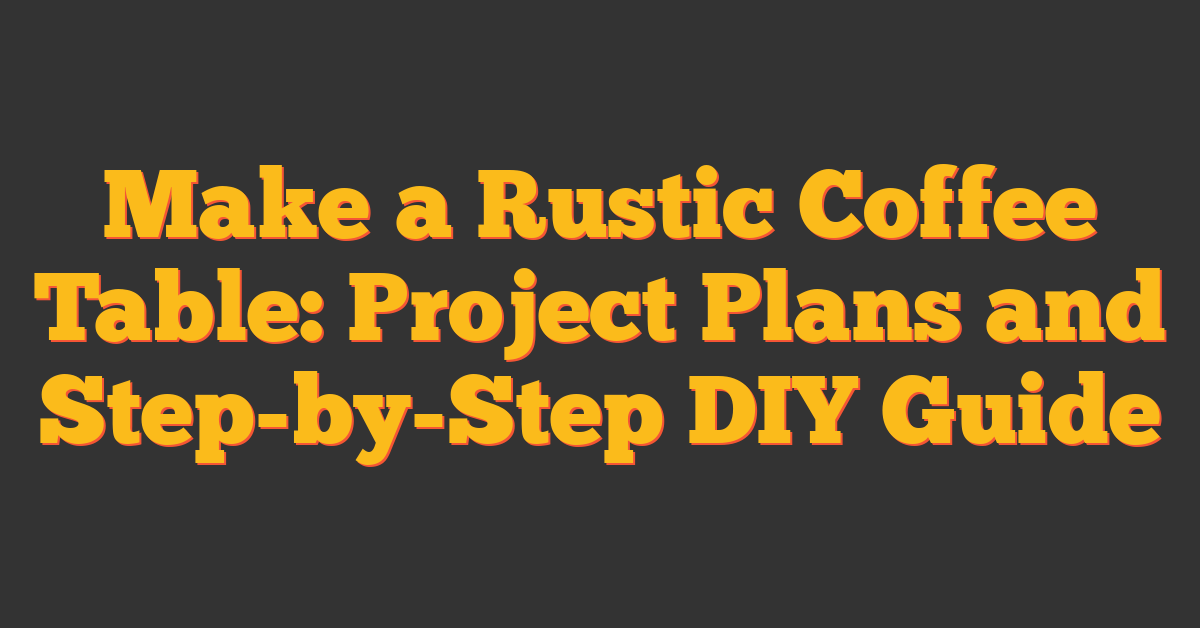Imagine the joy on your child’s face as they stir up delicious pretend meals in their very own play kitchen. Building a child’s play kitchen not only sparks creativity but also fosters essential skills like coordination and problem-solving. It’s a fantastic way to create a safe and engaging space where your little one can explore and learn through play.
With endless customization options, you can design a kitchen that perfectly matches your child’s personality and your home’s style. Whether you’re crafting simple countertops or adding fun features like working knobs and shelves, the possibilities are endless. Plus, building it yourself allows you to tailor every detail to suit your family’s needs.
Ready to embark on this creative journey? Let’s explore some inspiring ideas and practical tips to help you build the perfect play kitchen that your child will love and cherish for years to come.
Design And Features
Creating a play kitchen that combines functionality with aesthetic appeal enhances your child’s imaginative play. Carefully selecting design elements ensures durability and safety.
Materials Used
Choose high-quality, sustainable woods like pine, maple, or oak for sturdiness and longevity. Opt for non-toxic paints and finishes to ensure a safe environment for your child. Incorporate hardware made from stainless steel or brass to resist corrosion and wear. For additional features, use MDF or plywood for smooth surfaces and ease of assembly.
Safety Standards
Ensure all edges are rounded to prevent injuries and sand surfaces thoroughly to eliminate splinters. Use child-safe finishes that meet ASTM standards for non-toxicity. Anchor heavy components securely to avoid tipping, and include rounded knobs and handles to enhance grip and safety. Adhere to age-appropriate guidelines to match your child’s developmental stage.
Assembly Process
Ease Of Assembly
Building your play kitchen is a manageable and enjoyable project. Clear instructions guide each step, minimizing confusion. Pre-cut wood pieces and labeled hardware simplify the process, allowing you to assemble efficiently. Additionally, the modular design lets you make adjustments easily, ensuring a perfect fit for your space and your child’s needs.
Required Tools
Ensure you have the following tools ready before starting:
- Screwdriver: Phillips head for securing screws
- Hammer: Useful for nails and minor adjustments
- Measuring Tape: Accurate measurements prevent mistakes
- Power Drill: Speeds up assembly with pre-drilled holes
- Level: Keeps the kitchen evenly balanced
- Safety Gear: Gloves and goggles protect you during assembly
Having these tools on hand will make the assembly process smooth and efficient, letting you focus on creating a wonderful play space for your child.
Durability And Quality
A well-built play kitchen stands the test of time, providing lasting enjoyment for your child. High-quality materials ensure your kitchen remains sturdy and reliable through years of play.
Long-Term Use
Choose hardwoods like maple or oak for their exceptional strength and resistance to wear. These materials maintain their appearance and structure even with daily use. Reinforced joints and sturdy hardware prevent wobbling and ensure stability. If your child grows, the play kitchen adapts to their evolving play patterns without compromising integrity.
Maintenance Tips
Regular cleaning preserves your play kitchen’s finish and functionality. Wipe surfaces with a damp cloth to remove spills and crumbs. Inspect screws and fasteners monthly, tightening them as needed to maintain stability. Apply a protective sealant annually to safeguard against stains and scratches. Address minor repairs promptly to extend the kitchen’s lifespan.
Aesthetic Appeal
Creating an attractive play kitchen enhances your child’s imaginative experience. Choose designs that complement your home while sparking creativity.
Color Options
Select colors that inspire and engage. Bright hues like red, yellow, and blue stimulate creativity and energy. Neutral tones such as white, gray, and natural wood finish harmonize with various home décors. Combine vibrant accents with subtle backgrounds to balance excitement and sophistication. Non-toxic, child-safe paints ensure a safe environment while maintaining color integrity over time.
Space Optimization
Maximize functionality within available space. Compact designs fit smaller areas without compromising features. Utilize vertical storage with shelves and cabinets to keep essentials organized and accessible. Incorporate foldable elements or modular components for easy adjustment as your child grows. Efficient layout planning ensures the play kitchen remains a focal point without overwhelming the room.
Price And Value
Building your own child’s play kitchen offers significant cost savings and exceptional value compared to purchasing pre-made models.
Cost Analysis
Creating a play kitchen involves various expenses, including materials and tools. Here’s a detailed breakdown:
| Item | Cost Estimate (USD) |
|---|---|
| Hardwood Lumber | $100 – $200 |
| Non-Toxic Paints | $30 – $50 |
| Hardware (screws, hinges) | $20 – $40 |
| Finishing Supplies | $25 – $60 |
| Tools (if needed) | Varies |
Sourcing materials from local suppliers or repurposing existing wood can help manage costs effectively. Utilizing pre-cut wood pieces from kits may also reduce both labor time and expenses.
Value For Money
Investing in a handcrafted play kitchen ensures durability and customization. You receive a design tailored to your space and your child’s preferences. High-quality materials like maple or oak provide long-term use, resisting wear from active play. Additionally, building the kitchen yourself adds sentimental value, creating a unique piece that enhances your child’s imaginative experiences.
Conclusion
Creating a play kitchen for your child is a wonderful way to support their growth and happiness. You’ll enjoy watching them explore and express themselves in their very own space.
Taking on this project allows you to tailor every detail to fit your home and your child’s unique personality. It’s an investment in their imaginative world that will bring smiles for years to come.
Enjoy the journey of building something special and see the joy it brings to your little chef.
Frequently Asked Questions
What are the benefits of building a play kitchen for children?
Building a play kitchen fosters creativity and enhances essential skills like coordination and problem-solving. It provides a fun, pretend play environment where children can mimic real-life activities, boosting their imagination and social skills. Additionally, customizing the kitchen to reflect your child’s personality and home style creates a unique and engaging space that encourages ongoing play and development.
What materials should I use to build a safe and durable play kitchen?
Use high-quality, sustainable hardwoods such as pine, maple, or oak for durability and strength. Ensure all paints and finishes are non-toxic to maintain a safe environment. Additionally, choose materials that are resistant to wear and easy to maintain. Prioritizing these materials will help create a long-lasting play kitchen that can withstand active use by children.
What safety features should I consider when designing a play kitchen?
When designing a play kitchen, round all sharp edges to prevent injuries and use child-safe finishes to avoid harmful chemicals. Securely anchor heavy components to ensure stability and prevent tipping. Adhering to safety standards and using non-toxic materials are crucial for creating a safe play environment for your child.
How can I customize a play kitchen to fit my child’s needs and my home?
Customize the play kitchen by choosing colors and designs that reflect your child’s interests and complement your home décor. Incorporate modular elements that allow for easy adjustments and expansions as your child grows. Additionally, consider adding personalized features like nameplates or themed accessories to make the kitchen uniquely theirs.
What tools are needed to assemble a play kitchen?
To assemble a play kitchen, you will need a screwdriver, hammer, measuring tape, power drill, level, and appropriate safety gear. Having these tools on hand will ensure a smooth and efficient assembly process. Pre-cut wood pieces included in the kit can simplify the project, making it manageable even for those with basic woodworking skills.
How can I ensure my play kitchen remains durable and functional over time?
Choose hardwoods like maple or oak for their strength and resistance to wear. Regular maintenance, such as cleaning, monthly inspections of screws and fasteners, and applying a protective sealant annually, will preserve the kitchen’s finish and functionality. These steps help ensure the play kitchen remains a cherished part of your child’s playtime for years.
What are some design tips to make the play kitchen aesthetically appealing?
Select designs that complement your home’s décor while sparking your child’s creativity. Use bright hues or neutral tones to inspire engagement and create an inviting space. Incorporate attractive details like realistic appliances and storage solutions to enhance the visual appeal and make the play kitchen an inspiring centerpiece in your child’s play area.
How can I optimize space when setting up a play kitchen?
Choose a compact design that fits well within the available space and utilize vertical storage solutions to maximize functionality without overwhelming the room. Modular pieces that can be rearranged or expanded as needed also help in optimizing space. Efficient design ensures the play kitchen is both functional and seamlessly integrated into your home.
Is building a play kitchen cost-effective compared to buying pre-made models?
Yes, building a play kitchen can result in significant cost savings and offer exceptional value compared to purchasing pre-made models. A detailed cost analysis often shows that sourcing materials locally or repurposing existing wood can manage expenses effectively. Investing in a handcrafted play kitchen also provides customization and durability, making it a valuable long-term investment.
What maintenance is required to keep the play kitchen in good condition?
Maintain the play kitchen by regularly cleaning surfaces to remove dirt and grime. Conduct monthly inspections of screws and fasteners to ensure everything remains secure. Additionally, apply a protective sealant annually to preserve the wood’s finish and protect against wear and tear. These maintenance steps will help keep the play kitchen functional and attractive.




